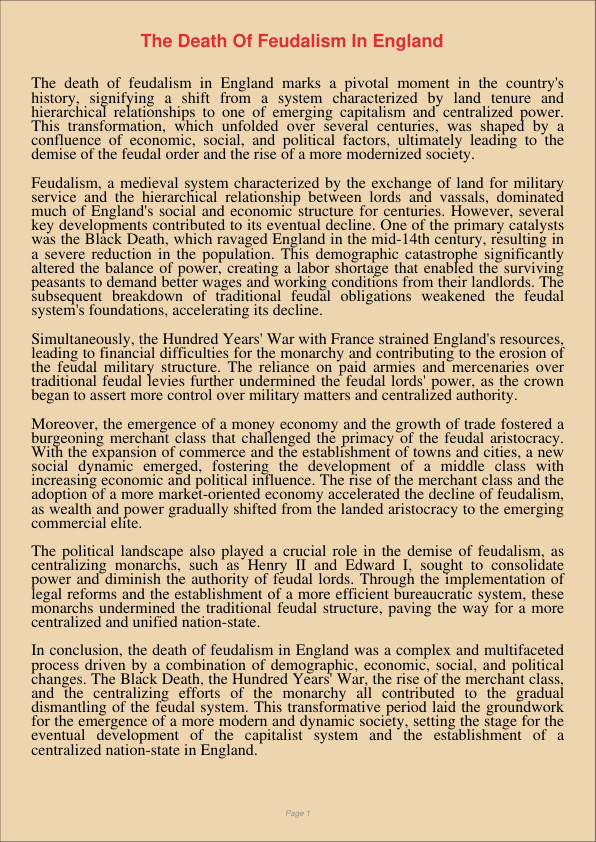The Death Of Feudalism In England
Dec 31, 2023
feudalism
england
Geography
English

The death of feudalism in England marks a pivotal moment in the country’s history, signifying a shift from a system characterized by land tenure and hierarchical relationships to one of emerging capitalism and centralized power. This transformation, which unfolded over several centuries, was shaped by a confluence of economic, social, and political factors, ultimately leading to the demise of the feudal order and the rise of a more modernized society.
Feudalism, a medieval system characterized by the exchange of land for military service and the hierarchical relationship between lords and vassals, dominated much of England’s social and economic structure for centuries. However, several key developments contributed to its eventual decline. One of the primary catalysts was the Black Death, which ravaged England in the mid-14th century, resulting in a severe reduction in the population. This demographic catastrophe significantly altered the balance of power, creating a labor shortage that enabled the surviving peasants to demand better wages and working conditions from their landlords. The subsequent breakdown of traditional feudal obligations weakened the feudal system’s foundations, accelerating its decline.
Simultaneously, the Hundred Years’ War with France strained England’s resources, leading to financial difficulties for the monarchy and contributing to the erosion of the feudal military structure. The reliance on paid armies and mercenaries over traditional feudal levies further undermined the feudal lords’ power, as the crown began to assert more control over military matters and centralized authority.
Moreover, the emergence of a money economy and the growth of trade fostered a burgeoning merchant class that challenged the primacy of the feudal aristocracy. With the expansion of commerce and the establishment of towns and cities, a new social dynamic emerged, fostering the development of a middle class with increasing economic and political influence. The rise of the merchant class and the adoption of a more market-oriented economy accelerated the decline of feudalism, as wealth and power gradually shifted from the landed aristocracy to the emerging commercial elite.
The political landscape also played a crucial role in the demise of feudalism, as centralizing monarchs, such as Henry II and Edward I, sought to consolidate power and diminish the authority of feudal lords. Through the implementation of legal reforms and the establishment of a more efficient bureaucratic system, these monarchs undermined the traditional feudal structure, paving the way for a more centralized and unified nation-state.
In conclusion, the death of feudalism in England was a complex and multifaceted process driven by a combination of demographic, economic, social, and political changes. The Black Death, the Hundred Years’ War, the rise of the merchant class, and the centralizing efforts of the monarchy all contributed to the gradual dismantling of the feudal system. This transformative period laid the groundwork for the emergence of a more modern and dynamic society, setting the stage for the eventual development of the capitalist system and the establishment of a centralized nation-state in England.